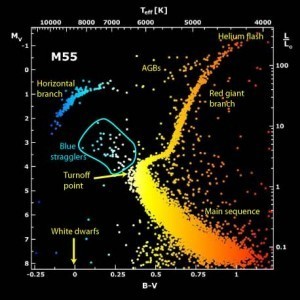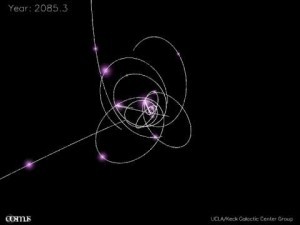One of the questions about galaxy formation is whether there is a pattern to the formation of stars. One popular model has been that stars form in the central region of a galaxy first, and then later stars further out form. This model is supported in part by the fact that stars in the nucleus of a galaxy tend to have lower metallicity than stars further away, and therefore tend to be older. Now new research supports this model, at least for the Milky Way.
The study looked at stars known as blue horizontal-branch stars (BHBs). These are stars at the end of their life, and are fusing helium in a last-ditch effort to counter gravitational collapse. Rather than being a red giant, these stars appear blue. They are bright stars, and so are easier to observe in the central region of our galaxy. Since larger BHBs burn bluer and brighter, their color can be used as an indication of their mass. Since larger stars enter the BHB stage earlier than smaller stars, this is also an indication of their age.
The team compared the color/age of 4700 BHBs from the Sloan Digital Sky Survey and their distance from the center of our galaxy, spanning a radius of about 40,000 light years. They found that the closer a star was to the center, the older it was likely to be. This agrees with the inward-out model of galactic star formation.
Paper: Rafael M. Santucci, et al. Chronography of the Milky Way’s Halo System with Field Blue Horizontal-Branch Stars. The Astrophysical Journal Letters, Volume 813, Number 1 (2015)











